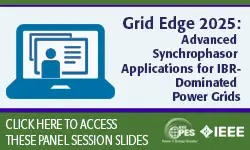Electrical Design of Variable Speed Hydroelectric Units
Ian Backus, Mathieu Bergeron, Derek Brown, Christiano Bühler, Roland Cheng, Lucas Delong, Jesse Fairchild, Russ Fostiak, George Girgis, Jacob Kravits, Lucas Kunz, Hans Naeff, Phil Spotts, Eric Vaughn, James Volk, Check-Kay Wong, John Yale, Masato Yano
-
Members: FreePES
IEEE Members: $10.00
Non-members: $20.00Pages/Slides: 20
White Paper
07 Sep 2022
Historically, hydroelectric units have been a conventional design whereby the rotational speed of the generators is fixed by the frequency of the grid to which they are connected. The development of high-energy power semiconductors has made it practical to use frequency converters as a method to adjust the rotational speed of a variable speed hydroelectric (VSH) unit independent of the electrical frequency of the grid. Two types of VSH units are described, including a discussion of the benefits of each. Various resources available from industry, government and professional organizations were researched to identify the standards that are directly applicable to VSH design and what, if any, deficiencies exist.
Chairs:
Russ Fostiak
Primary Committee:
The Task Force on Variable Speed Hydro
Sponsor Committees:
Hydroelectric Power Subcommittee


